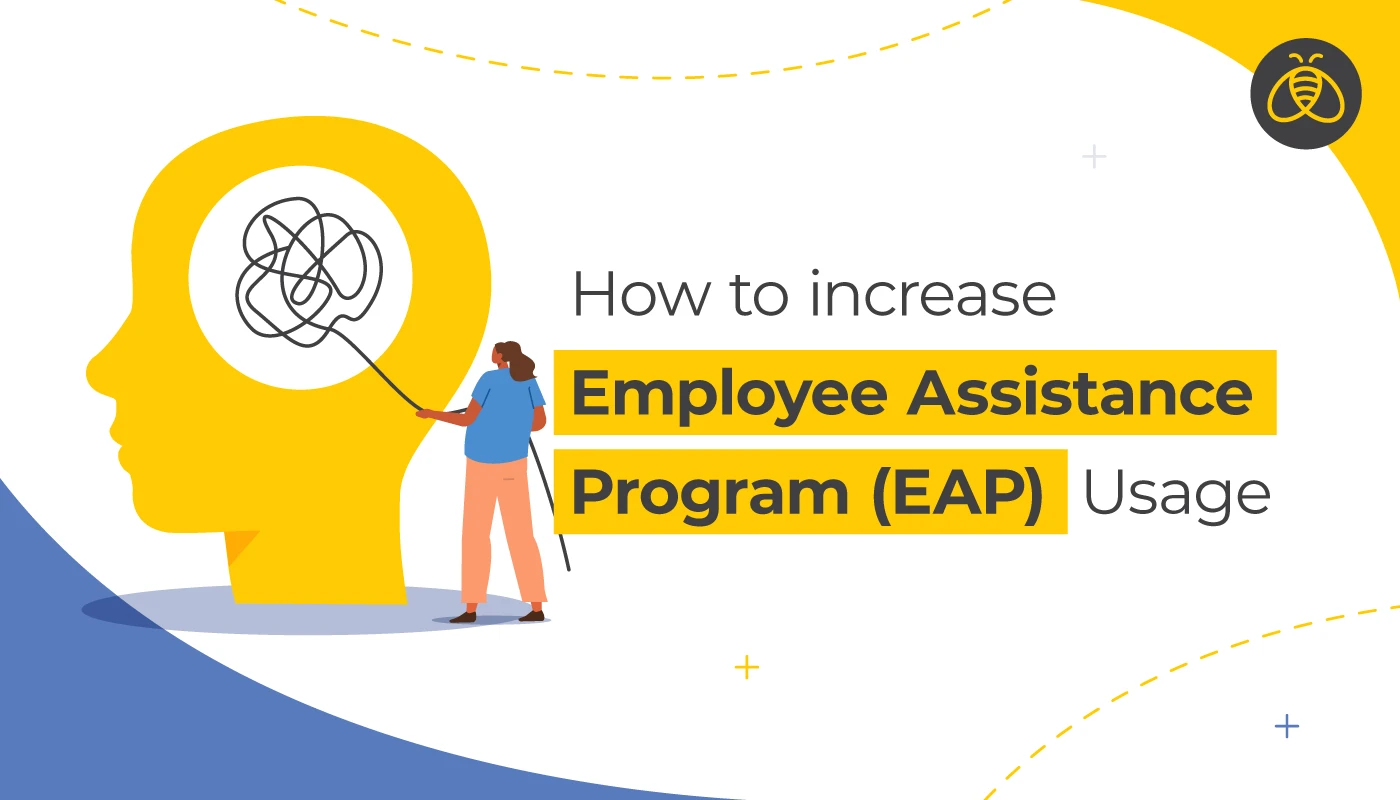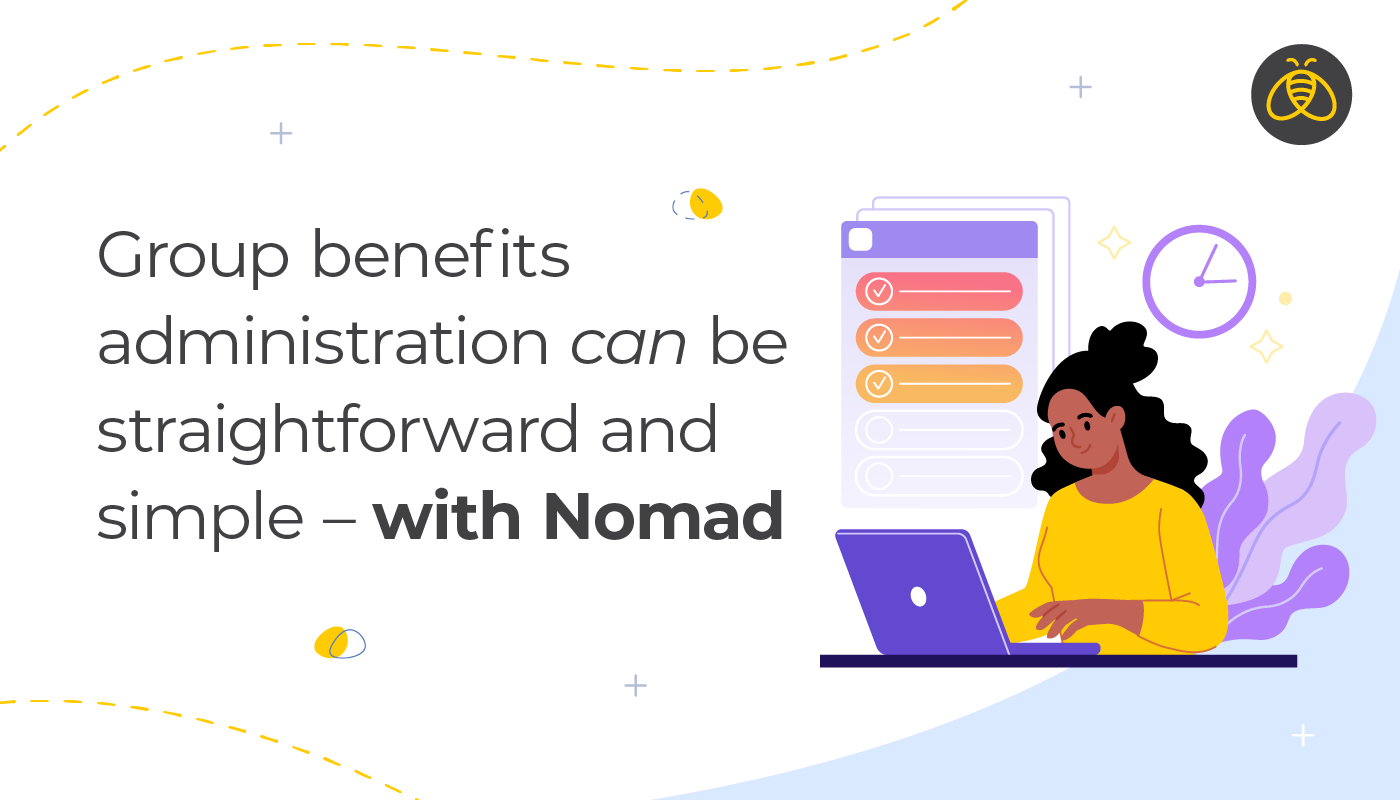How to Increase Employee Assistance Program EAP usage
By: Benefits by Design | Tuesday January 23, 2024
Updated : Monday January 29, 2024
How can your company get the most out of their investments into employee health and wellbeing, including your Employee Assistance Program (EAP)? Increasing EAP usage provides a host of benefits for both employees and employers alike. Such as increased productivity and engagement, better work-life balance, and improved working relationships.
Wellness program and EAP usage
Employees have been asking for better wholistic support from their company benefits – and employers have been delivering! Currently, 43% of Canadian employers offer an EAP, and 73% offer some type of wellness program.
However, Canadian employees need more than just access to an EAP. In fact, one study found that 40% of them are not even aware of what an EAP is, let alone the services it offers. And even if they do know, many are not aware of how it works. Twenty-seven percent of respondents who indicated they would not use the EAP cited cost as a factor.
Quick fact: EAPs are free for employees (and sometimes their dependents) to use.
How to increase EAP usage
The benefits of healthy, engaged and productive employees cannot be understated. The EAP can help employees conquer their wellbeing goals and issues through individualized support. There are several tactics employers can use to promote the understanding of and increase EAP usage.
1. Ongoing communication
Employee benefits communication shouldn’t be a one-and-done situation. After onboarding, it’s recommended that employees receive ongoing reminders and communications about their benefits plan.
When 34% of employees that know what it is still do not know what is covered by their EAP, it’s clear that more can be done. Try scheduling regular employee meetings to address this knowledge gap. Make sure you:
- Explain the services provided by your EAP, and how employees can access them;
- Remind employees that the service is free and confidential;
- Are prepared to answer employee questions by confirming what is and is not covered;
- Reach out to your EAP provider to see if they offer on-demand webinars or employee presentations you can share with your employees;
- Provide a link to the EAP provider’s website and any other resources you have. Ensure this link is available in multiple areas and formats;
- Put up posters with the EAP information and contact number.
2. Company resourcing and commitment to staff
Create a culture that allows employees the time and space for self-care. An employee who is burnt out, stressed out, and overworked doesn’t have the time or energy to put towards managing their wellbeing. While this seems counter-intuitive, it’s unfortunately the reality. Having a meeting about wellness benefits and EAP offerings only cuts into an overwhelmed employee’s time for completing tasks. So, while you’re touting the glories of your EAP, they’re distracted by their responsibilities, and are not absorbing the information.
A big step to addressing this issue is to ensure staffing levels are adequate and that employees are prioritizing their tasks properly. This can be accomplished through alignment of established employee roles and the actual tasks the employee performs. Ensure that each role’s demands are reasonable and that each team has the time and resources to succeed. When employees feel adequately supported, they can focus on their well-being and health as well.
3. Company culture and mental health stigma
Leadership buy-in is generally a huge component to any organizational initiative. Improved mental health is an intrinsic benefit of an EAP, but many conditions that negatively affect our mental health carry heavy stigma. Make mental health discussions a common part of the company’s dialogue:
- Include a mental health and wellness component within company meetings;
- Ask if any employees would be comfortable sharing their experiences using the EAP;
- Encourage employees to be sympathetic to each other, and discourage un-inclusive, critical or bullying behaviours;
- Train leadership in conflict resolution and how to conduct discussions around mental health;
- Make use of awareness days, such as Bell Let’s Talk Day (this Thursday!), or Mental Health Awareness Week, and utilize their provided resources and ideas to keep the conversation going.
4. Confidentiality matters
Another barrier to EAP usage that employees have consistently brought up is the confidentiality aspect. Many are unsure or unaware if the EAP will report back to their employer should their issues affect their productivity at work. Consequently, employees are uncomfortable divulging personal issues when they believe there could be ramifications to their career.
However, this issue can be clarified with consistent reminders to employees. If your company has an in-house EAP, consider outsourcing to a carrier to provide that extra layer of anonymity. Remind employees that any data you do receive from the EAP provider is aggregated and does not include personal information such as names or specific claim details.
Why you should encourage EAP usage
There are a variety of great reasons to encourage EAP usage by your employees.
Firstly, EAP’s have been shown to have a great return on investment (ROI). Smaller companies realize a 3:1 ROI, medium-sized companies are usually closer to a 5:1 ROI, and large-sized employers can see up to a 9:1 ROI.
Calculating the Return on Investment of Employee Assistance Programs
Secondly, increased EAP usage has been shown to help reduce absenteeism and presenteeism, which affect both productivity and company culture. Absenteeism and presenteeism can both be reduced by improved employee wellbeing. In fact, a Morneau Sheppel study found that 46% of employees would have called in sick at least once were it not for the EAP support.
Thirdly, when employees are doing well in their personal lives, they are more productive and engaged at work. Financial worries, marital issues, or eldercare concerns can all be addressed by the EAP. Finding support and actionable solutions can go a long way to relieving stress and anxiety. In turn, this allows employees to come to work prepared and focused.
Lastly, your claims experience (how much the EAP is used) does not directly affect your premium amount. Which means no matter how many employees use the program, the cost remains the same to the employer. And since these premiums are already being paid, the benefits for employees and employers only increase with higher EAP usage.

